By Air Marshal Anil Chopra (r)
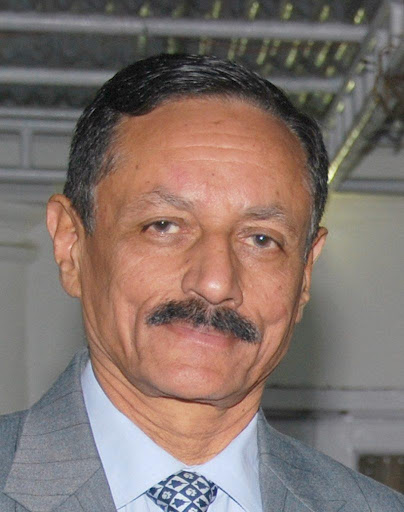
Uncrewed aircraft technologies have now matured. The world is in a transition. Dual-use (optionally crewed) aircraft are flying in larger numbers. Uncrewed Combat Air Vehicles (UCAV) are being intensively used in combat with more and more drones being armed with aerial weapons. Uncrewed Aerial System (UAS) are taking off and landing by themselves including on the moving aircraft carriers. Autonomous air refuelling has been tested. Uncrewed stealth bombers are under development. Uninhabited helicopter convoys can be used for delivering supplies to troops deployed on combat front lines.
Coordinated UAS swarms are already a reality and could also act as a multi-strike decoy or jam the enemy defences through sheer numbers. UAS strikes will be a must to lead into territories with integrated air defences. UAS are also being used for missions like electronic attacks or other non-lethal effects. By the year 2050 every conceivable mission, including heavy lift, would be unmanned.
With no pilot inside, there is a risk of lowering the bar to use force. Also, there is the risk of terrorists and non-state actors acquiring such assets. A casual hobbyist could by mistake fly a drone into an airliner. All these issues are being considered by regulators and security establishments. Counter-drone technologies are also evolving.
All militaries are acquiring UAS and drones to undertake a variety of missions. Major Powers are having design and production setups. A significant part of defence budgets is now being earmarked for UAS. India is also working on Artificial Intelligence (AI) based weapon systems and platform technologies.
Under the proposed $3.5 billion mega-deal, India will acquire 31 General Atomics MQ-9B high altitude, long endurance drones, with 15 SeaGuardians for the Indian Navy and eight SkyGuardians each for the Indian Army and the Indian Air Force (IAF). The Indian Navy has been operating two SeaGuardian drones (unarmed variants) on lease from the American Company since 2020. The long-endurance drones supplemented the Boeing P8-I maritime patrol aircraft.
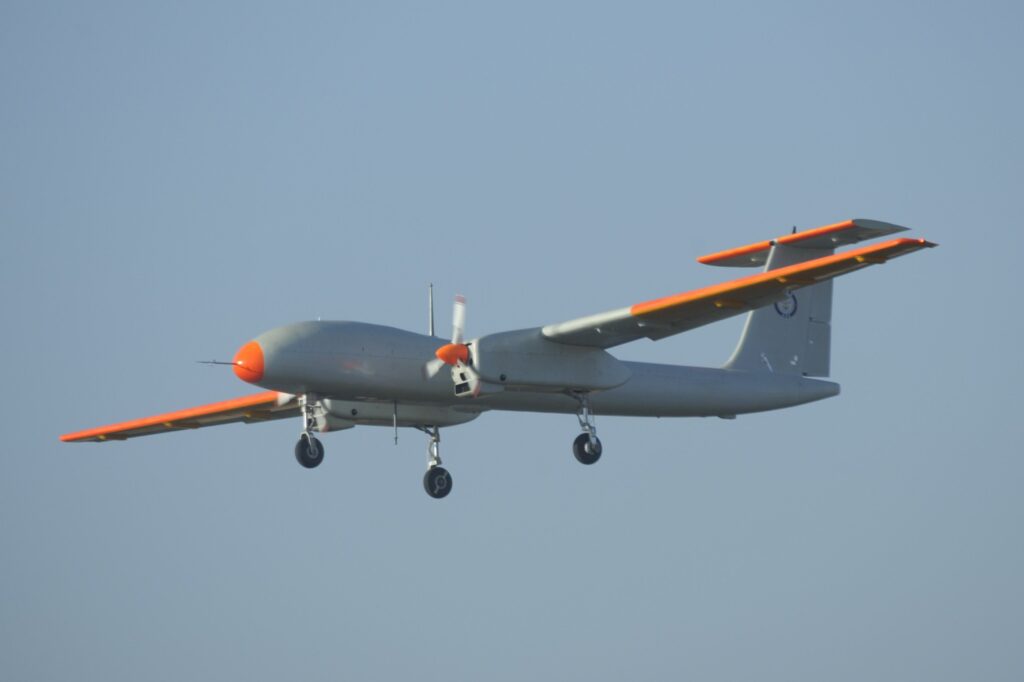
Drones for Military
Militaries use drones mostly for dull, dirty, or dangerous missions. Dull, being long-endurance surveillance missions; dirty could be flying into a contaminated area; and dangerous would be in a highly contested threat area. Drones have been used in military operations for several decades. In the past, they were primarily used for surveillance. However, with advances in technology, drones have become more capable and versatile. They are now used for a wide range of military operations, including combat missions.
Important military missions are intelligence gathering, surveillance, and reconnaissance (ISR) which require high-resolution cameras and sensors. Drones support target acquisition and targeting by ground-based weapons or airborne platforms. They could also be used for laser lasing. Drones support battle damage assessment. Weapon-carrying drones are used for precision strikes, including from stand-off ranges. They can provide offensive air support in the ground battle against armour, gun positions and troops. Drones can perform interdiction missions.
Modern drones also have air-to-air weapons that could be used both for defensive and offensive missions. Drones could fire missiles to neutralize incoming cruise missiles and other platforms. They can be used as an anti-UAS platform or even knockdown a combat helicopter.
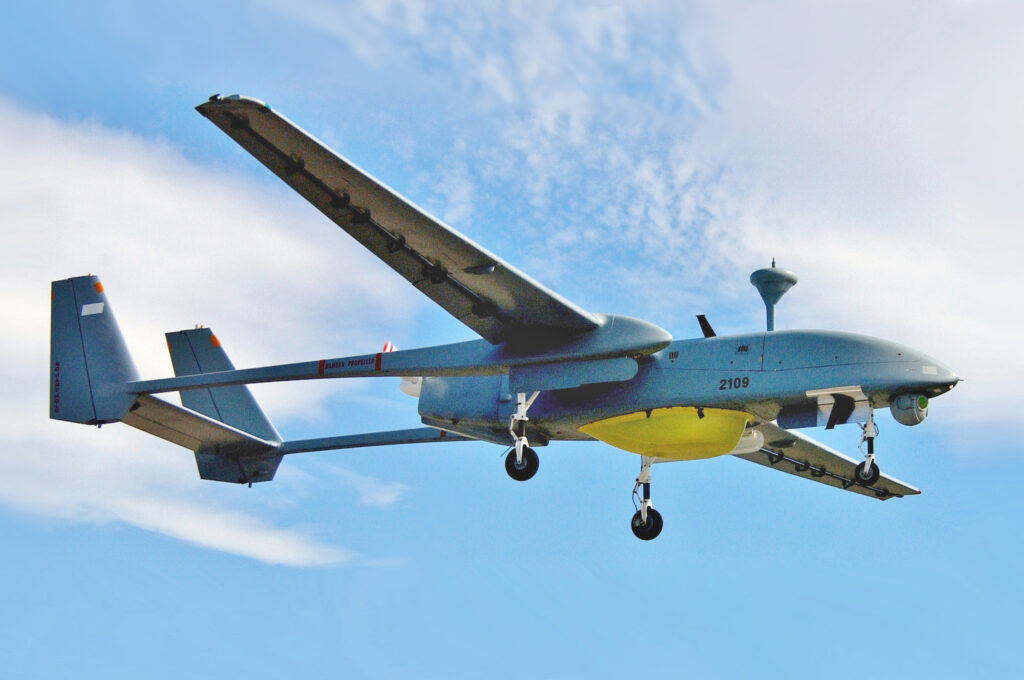
Drones help create combat zone situational awareness and in turn force protection. Drones are used for logistics and supply missions. They also act as airborne communications nodes to extend radio range. UAS greatly support search and rescue missions.
Large UAS Advantages but Challenges in Contested Domain
Large UAS platforms have high endurance and thus long loiter time and are ideal for surveillance. They have greater weapon carriage capability. They can fly high above small arms and man-portable AD weapons. In uncontested areas, they have been effectively used to destroy ground targets and also to target individual militant leaders as was done in Afghanistan and elsewhere in West Asia. Large UAS now have a flight refuelling role. Future UAS could be stealth.
But large UAS are expensive. They can be taken down by long-range SAMs and fighter aircraft. They were very effective in Iraq and Afghanistan because of the uncontested environment. American large drones have been threatened by Russians in Syria and the Black Sea despite de-confliction protocols being in place between the two superpowers. Yemen’s Houthi rebels’ air defences have successfully targeted them in West Asia. At least 5 MQ-9 Reaper drones have been downed.
With the major contest now developing between the U.S. and China and Russia, the environment would not be benign. Similar will be the case between India and its neighbours China and Pakistan. Yet large UAS continue to have a role with stand-off weapons and for large area surveillance such as Oceans and Seas, and across mountains. Large loiter munitions like IAI Harop and Harpy can have significant endurance and then destroy a well-fortified concrete target.
Game-Changing Small Drones – Cheap and Deadly
Small drones could be as little as a few grams to just a few kilograms. Small drones have many roles including operations in confined spaces. Weapon-laden drones can be used for Kamikaze attack roles, as has been very effectively used in the Armenia-Azerbaijan conflict and in the Ukraine-Russia war. These drones are usually as cheap as $3,000 and may go up to about $50,000. They can therefore be held in large numbers in unit inventory. Small drones also provide logistics support to the field commander in the mountains. They are good for across-the-obstacle surveillance. These have been seen to have game-changing roles.
Complexities of Drone Detection
Small size, low radar cross section (RCS), low noise, smoke, and infrared (IR) signature, make drone detection difficult. Drones can be detected by using radio frequency (RF) analyzers, acoustic sensors (microphones), and optical sensors (cameras). Avian radars are being used at airports for checking bird activity. These have a limited range and are expensive, so cannot be deployed across the entire border. The radar that detects drones may also detect birds and make it complicated. The radars do have longer range, are more accurate, and can see more threats in day and night vis-à-vis optical means. Some Doppler radars are being designed to distinguish between drones and birds.
Optical sensors, visible and infrared, can detect drones by day and night. Modern optical sensors have improved resolution and processing power. Also, sets of microphone arrays can be used for detection and rough triangulation. They are passive and great gap fillers. However, they do not work well in high ambient noise. Also, their range is limited to around 500 meters.
Counter Drone Technologies – Area of Action
Drones can be neutralized by physical destruction, jamming, or taking control of the drone. There are RF Jammers to mask the controller signal. But then some drones are programmed to return home automatically under such a scenario. A GPS spoofer could send a new signal to the target drone and replace the communication signal it uses to navigate to its own ‘safe zone’. Cyber takeover systems are relatively new. They passively detect radio frequency transmissions to identify the drone’s serial number, locate the pilot’s position using AI, and then take over the drone.
Kinetic solutions involve shooting the drone using a gun. High-power microwave (HPM) devices can generate an electromagnetic pulse (EMP) capable of disrupting drone electronic devices. However, there is a risk of unintentionally disrupting communications or destroying friendly electronic devices in the area. High-energy lasers defeat the drone by destroying the structure and/or the electronics. Laser could also cause collateral damage. Net guns can fire a net at a drone and entangle drone rotor blades to bring it down.
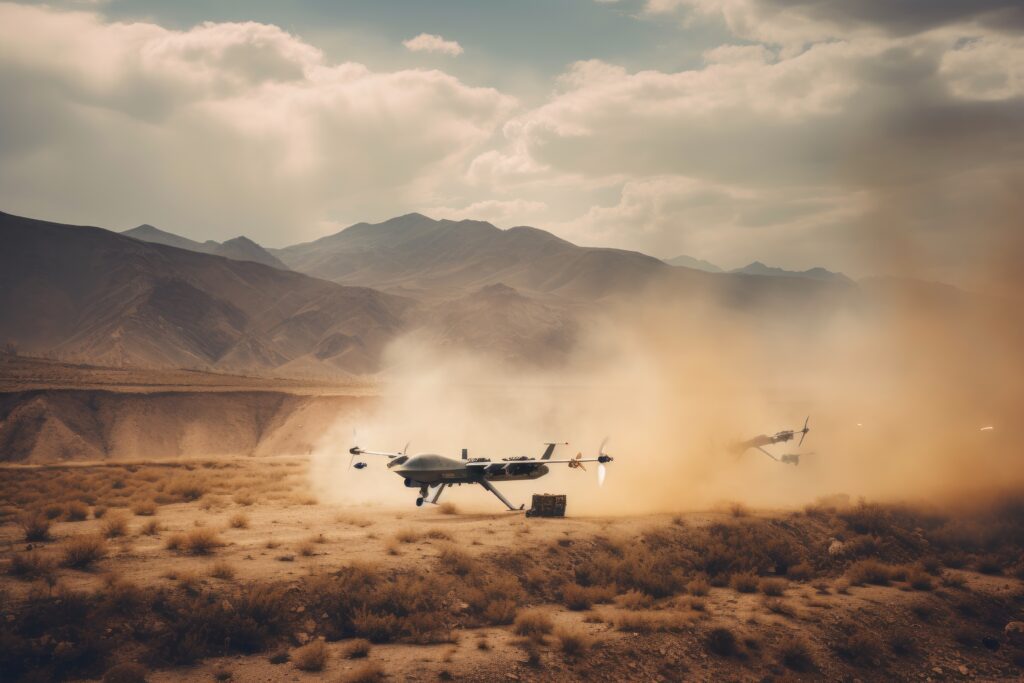
Drone Swarms and Swarm Counters
Better communications, high-speed computation and AI have greatly supported drones flying in coordinated swarms. Drone swarms have great military applications. Drone swarms can be used as decoy formations. A drone swarm can saturate enemy radars and also air defence weapons. A typical drone swarm may have a mix of surveillance, ELINT, electronic warfare and attack drones. Technology evolved for drone swarms have also been ported onto manned-unmanned teaming (MUMT).
Drone swarms will have to be countered using standard anti-drone methods. Jamming intra-drone links could send them astray. A drone swarm could be used to intercept the adversary drone swarm. Satellite-based directed energy weapons would be used to neutralize drone swarms in the future.
Crewed Uncrewed Teaming
Aircraft automation and data links have allowed crewed uncrewed teaming (CUT). Such a team can use the advantages of both, the less expensive drone, and the much higher flexibility and firepower of a manned platform, without exposing the more expensive manned aircraft and the airborne crew to a high-threat environment. The drones could be launched from the ground or from an airborne mothership. The package members are assigned separate roles and tasks. The uncrewed “loyal wingmen” could perform ISR or tactical early warning missions. A few could act as decoys. Others could take on electronic warfare and perform Suppression of Enemy Air Defences (SEAD) roles. Significant members could be carrying munitions. Some would have intelligence-gathering roles and also for battle damage assessment.
Major Drone Manufacturers
Because of the high demand for military drones, the market is growing rapidly. Among the major large UAS manufacturers of the world are General Atomics Aeronautical Systems, Lockheed Martin, Raytheon, Northrop Grumman, BAE Systems, Elbit Systems, Israel Aerospace Industries (IAI), Turkish Aerospace Industries, and AeroVironment, among others. Both, China and Russia have significant UAS manufacturing capability. China’s Wing Loong series is sophisticated and being sought by many countries. For long the Europeans were dependent on the U.S. for UAS. Dassault Aviation, Leonardo, and Space SAU are producing the future “Eurodrone” which will progressively replace the Reaper drones in France. Turkey’s Bayraktar TB2 has had great success and many orders. Pakistan too manufactures UAS with technical support from China.
The small drone market has many players. The top small-drone manufacturers of 2023 were DJI, Yuneec International, and PowerVision, all from China. They control nearly 70 percent of the small civil drone market. The top American companies in this category were AeroVironment and Insitu. Parrot and Delairis are French. The British, German and Italian suppliers have developed different models of tactical drones. Poland’s Warmate and Iran’s Shahid drones have been used in many conflict zones. Low-cost “off-the-shelf” drones are being adapted for military use by non-state groups like Hezbollah.
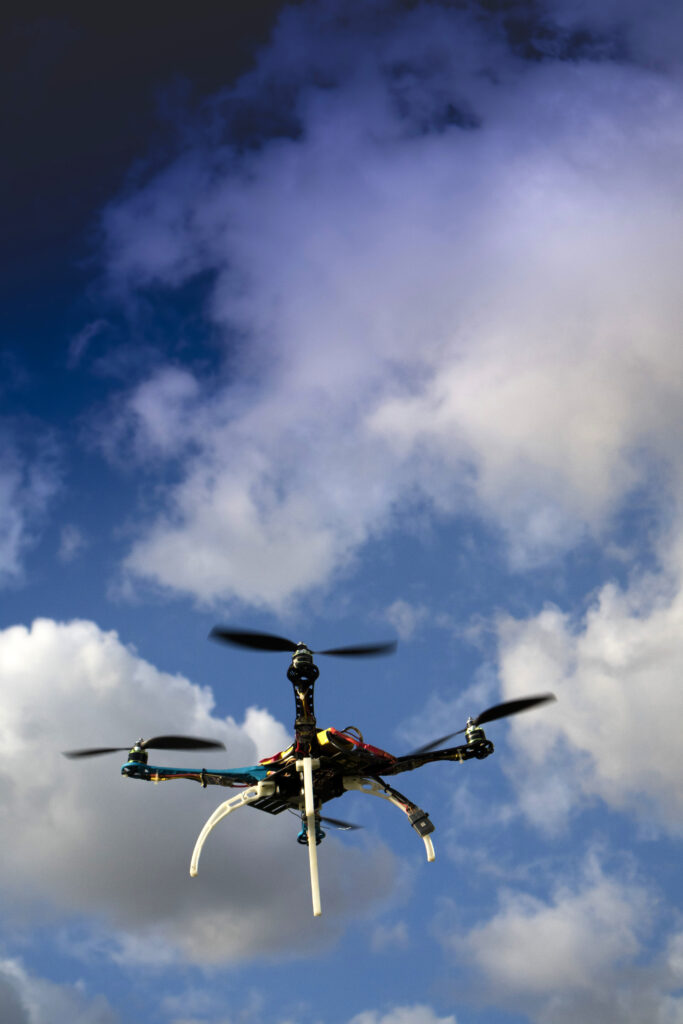
Recalibrate Large Drone Op Roles
The Ukraine conflict has shown that significant operational battle-zone effects can be achieved by using low-tech cheaper kamikaze drones instead. These effects will multiply when a drone swarm is used. Large loitering drones such as IAI Harpy and Harop do have significant endurance and can make a kamikaze attack, and have a huge impact, but also cost a lot. There are some expensive drones that can be recovered back if not expended.
Large drones have proved very well for ISR. The US, Russia and China continue to develop large drones. However, in contested domains, they will have to stay far to be safe. There are plans to develop large drones for the contested environment by increasing self-defence capability, and better maneuverability. This would mean airframe design changes and also compromises on endurance. With a large number of space-based constellations coming up in low earth orbit, part of the ISR role can best be done from space.
There is clearly a need to re-design and produce more survivable large drones. They have to be stealthy like the proposed Indian “Ghatak” drone. Also, there is a need to redefine the operational employability and roles of existing ones. More stand-off sensors and weapons perhaps. Improved AESA radar, self-defence electronic suite and air-to-air weapons. Survivability can be increased by using self-protection pods against infrared and radio frequency-guided threats in contested environments. The large drones could also be converted into mother-ships for smaller kamikaze drones. They could be adapted to carry air-to-air interceptors or directed energy weapons to counter air and missile threats to remote and forward bases including during out-of-area contingencies. The USAF is already working on a future Next-Generation Multi-Role Unmanned Aerial System Family-of-Systems.
Large Drones in Indian Sub-Region
China already operates the Chengdu GJ series of drones, also called Wing Loong. These are in both Medium Altitude and High-Altitude Long Endurance variants (MALE & HALE). China has its armed variant and continues to develop more advanced ones. The Wing Loong II, with provision for up to twelve air-to-surface missiles, entered the PLA Air Force (PLAAF) service in 2018. As per media reports, a new generation of high-speed, long-endurance drones powered by low-cost jet engines has entered military service in China.
Pakistan acquired the CH-4 UCAVs from China. They have used them to conduct strikes in Baluchistan. They have the maritime variants also. The indigenous Burraq UCAV has been jointly developed and built by the National Engineering and Scientific Commission (NESCOM) and the Pakistan Air Force (PAF). Shahpar-2 is another indigenous UAV. They also acquired significant numbers of the Turkish Bayraktar TB-2 UAVs. They have ordered the Bayraktar Akıncı HALE UCAV, deliveries for which have reportedly just begun.
Indian armed forces have depended on Israel for its UAS requirements with IAI Heron and Searcher. The Harpy and Harop were the large loiter munitions. India’s DRDO remains the major player for large UAS in India with its Tapas-BH-201 and Ghatak UCAV still evolving. Adani-Elbit makes Hermes UAS in India. India has over 100 drone start-ups, and the market has a big future. Indian armed forces have placed significant orders for small drones. IdeaForge and Newspace Research & Technologies have received significant orders from the Indian Army. Veda Defence Systems has an order from the Indian Air Force (IAF). Many more orders will be placed regularly.
The large drones will continue to have a significant role in maritime surveillance. They are much cheaper to operate than the P-8I Poseidon aircraft and can supplement the air effort. India must accelerate the development and production of indigenous systems. There is a need to work more aggressively on MUMT.
Future Trends
DARPA had funded the development of Skyborg, a software and hardware package designed to allow a variety of low-cost, loyal wingman UAVs to fly and carry out missions autonomously. The Skyborg project is a USAF Vanguard program developing UCAV intended to accompany a manned fighter aircraft. Contracts have been awarded to Boeing, General Atomics, Kratos Unmanned Aerial Systems and Northrop Grumman. A Skyborg-equipped UAS conducted its maiden flight in April 2021. Two General Atomics MQ-20 Avenger UAVs demonstrated in-flight communication with each other and “responded to navigational commands” while monitored from the ground command and control station.
Northrop Grumman Corp’s Model 437 stealthy fighter jet with a 4,500 km range will involve flying alongside the F-35 jet fighter. USAF plans to build an airborne, autonomous ‘best of breed’ system of systems. The UAVs would be paired with the USAF’s Next-Generation Air Dominance (NGAD) fighter.
Miniaturization of antennas is being studied to develop smaller and more agile UAVs with enhanced capabilities. Novel materials and manufacturing techniques are evolving. Drones-based flying ad-hoc networks (FANETs) for wireless communications will offer advantages of coverage, increased mobility, and access to remote or inaccessible areas. Tilt rotor designs are also evolving for a seamless transition from vertical take-off and landing (VTOL) to higher-speed forward flight.
Alternative energy sources such as solar and electric hybrid are under testing. Integration of UAVs with Internet of Things (IoT) will support data collection, analysis, and communication. Future UAVs will have collision avoidance systems. They will be able to quickly switch Op roles. Having foldable wings would reduce storage space and make it easy to transport.
The drone market is growing rapidly due to the high demand from militaries. More than 80 countries now have military drones. The rising civil market is adapting to meet the military demands. As per Statista analysis, the global drone market was $26.3 billion in 2021 and will reach $54.6 billion by 2030. The growth is mostly security agencies driven. Countering unmanned aerial systems (CUAS) has also become a big market.
The increased demand is also bringing greater investments in technologies related to photonics, optronics, AI, image analysis, and sensors of all kinds. Actions are on to increase survivability in contested environments.
India’s initial MUMT experimentation is being led by HAL with the proposed LCA-based CATS in collaboration with a Bengaluru-based start-up, Newspace Research & Technologies. It will involve a recoverable wingman till the combat radius of 350 km. The range would increase to 800 km for a kamikaze attack on target. India has an ambitious drone development program. There are a large number of start-ups. The plan is being driven at the highest levels of the government. The future is uncrewed, and India must succeed.
Air Marshal Anil Chopra (r) PVSM AVSM VM VSM is the Former Director General of the Centre for Airpower Studies.





